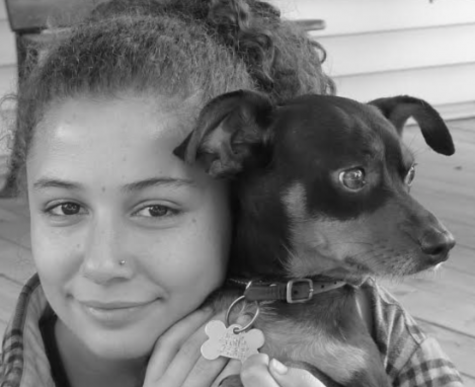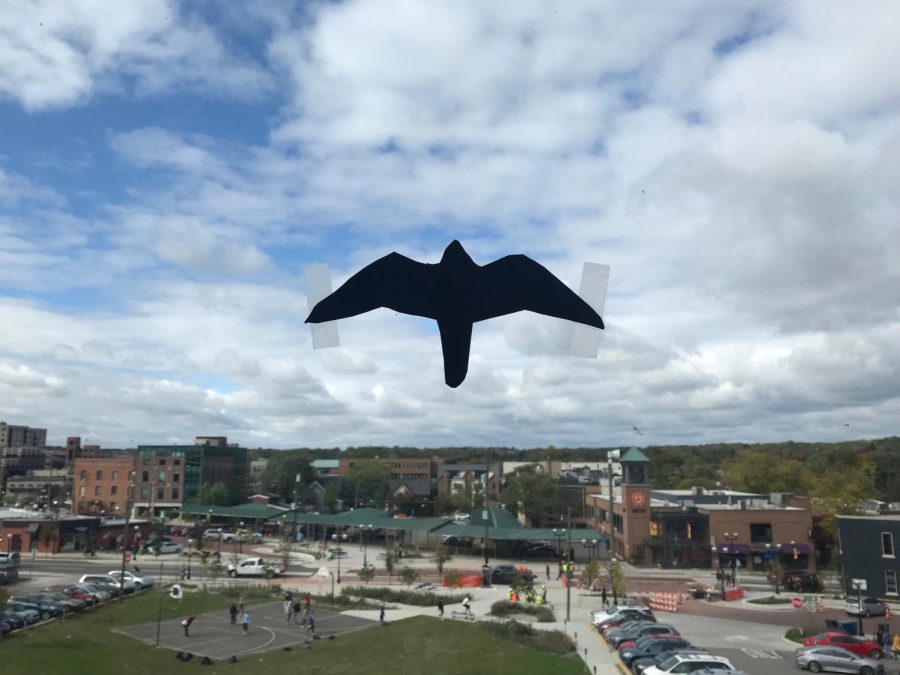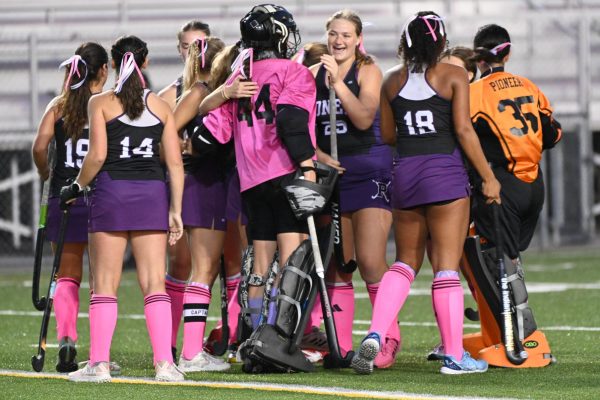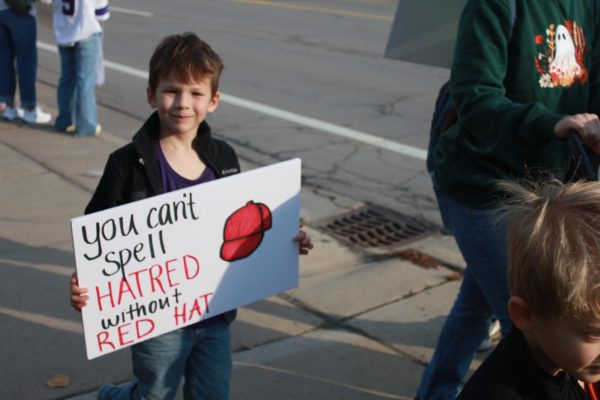Birds in the windows
A paper falcon is taped above the northwest entrance of Community High School overlooking Kerrytown. The falcons were posted after science teacher Courtney Kiley spotted a dead songbird outside the school.
Community High School (CHS) science teacher and leader of Ecology Club Courtney Kiley was walking the perimeter of the building, when she found a beautiful black-throated blue warbler lying on the ground, dead. The warbler fatally flew into a window — a common way that human activity affects the bird population, which often goes unheard of. This happens especially around this time of year due to the upcoming migration. A side effect of which is disorientation in flight.
“This is preventable,” Kiley said. “This can be stopped.”
And in keeping to her promise, Kiley had the students in Ecology Club cut out an army of paper falcon silhouettes to put in the school’s windows. The cut-outs are made to look like falcons because a songbird wouldn’t put themselves at risk and intentionally fly towards a bird of prey. They also help birds distinguish between what is a window and what is open air.
Fellow science teacher and friend of Kiley’s, Liz Stern had another incident very similar to the one Kiley recounts. Stern rummaged through her medicine cabinet in her newly renovated bathroom until she heard a thud.
“I thought maybe my husband had dropped something,” Stern said. “But it felt like it was right there.”
But after investigating, it turns out a bird had ran into her window. This bird was luckier than the warbler, when Stern found it, it was still breathing. Checking up on it a second time, the bird was sitting up. Finally, the bird had flown away when Stern checked on it one last time.
“I texted Courtney right away and said that I needed one of those [falcon silhouettes].” It is very important to maintain a plentiful population of birds around the world. Lots of people have made efforts to diminish the number of threats that songbirds face.
“There was a big push a couple of years ago to stop having outdoor cats, so they wouldn’t kill the songbirds,” Kiley said. Songbirds are crucial to a thriving ecosystem. They spread seeds through their feces and during the process of nest-building, while also acting as prey for larger birds and other animals.
“These birds are spreading nutrients all over the world.” Kiley said. “Humans have to do their part to help protect the songbirds.”

Leah is a junior at Community and this is her first year on staff. Outside of school, she does theater at Pioneer and interns as a wildlife rehabilitator at Howell Nature Center. All of Leah’s writing is done alongside her trusty canine sidekick, Chase. Leah also loves random science facts, so if you know any, please go and tell her!









